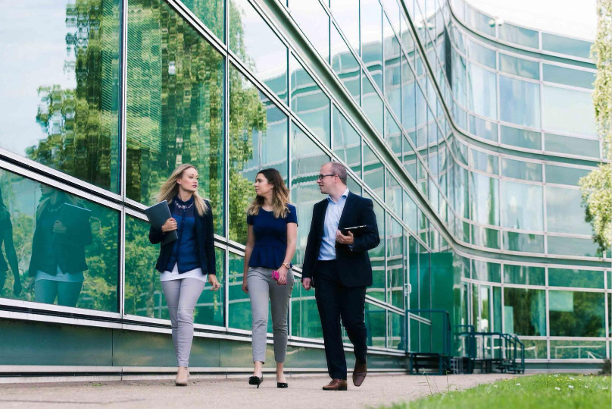Reimagining the Workplace: Turning Insights into Action
At Work Transformers, we believe every workplace has the potential to become more than just a collection of desks and meeting rooms. It can be an ecosystem that actively supports people, teams, and the wider organisation. One of our recent workplace strategy projects illustrates exactly how data, engagement, and design thinking can transform the employee experience while driving efficiency and business performance.
The Challenge
The client was facing challenges familiar to many large organisations:
- Workspaces that felt “one size fits all,” despite teams working in very different ways.
- A lack of variety in settings to balance focused and collaborative work.
- Outdated technology that made mobility and productivity harder than it should be.
- A floorplate where adjacencies had evolved through history rather than strategy, leaving some teams fragmented and disconnected.
- A physical environment that felt dated and uninspiring, failing to reflect the energy of the people or the ambition of the business.
Our task was clear: deliver a strategy that made the workplace fit for purpose, aligned with evolving workstyles, and capable of energising employees for the future.
Our Approach
We took a data-led, human-centred approach. The strategy was informed by a blend of qualitative and quantitative research methods:
- Leadership interviews to understand organisational objectives.
- Employee surveys and focus groups to capture everyday experiences and aspirations.
- A two-week time utilisation study with thousands of observations to build a robust picture of how space was really being used.
- Workshops and design sessions to test, refine, and validate emerging ideas with the people who would ultimately use the space.
This layered methodology meant we weren’t working from assumptions. Every recommendation was grounded in evidence and shaped with employee input.
Key Insights
From this research, six themes emerged that guided our recommendations:
- Variety of Settings – Different teams needed different types of spaces. A richer menu of settings was required, moving away from a rigid desk model to a choice-based environment.
- Balancing Focus and Collaboration – While concentration was critical, employees also needed better support for informal collaboration and confidential conversations.
- Adjacencies – Effective teamwork depended on bringing the right groups closer together while reducing legacy-driven fragmentation.
- Space Efficiency – With average occupancy at just under 60%, there was a clear opportunity to introduce smarter sharing ratios and reallocate space to higher-value uses.
- Technology Enablement – Outdated IT infrastructure was holding people back. New tools were needed to enable seamless mobility and support collaboration.
- Look & Feel – The physical environment needed to reflect the culture and brand of the organisation, moving away from a “back-office” feel to a space that inspired pride and energy.
From Data to Design
These insights shaped a strategy built around flexibility, choice, and balance. We created three key employee profiles – residents, internally mobile, and externally mobile – and used these to model how space could best support different patterns of work.
From there, we developed planning scenarios that introduced desk-sharing ratios while reinvesting the space gained into ancillary settings. This enabled the creation of:
- Quiet rooms and focus spaces for concentrated work.
- Informal collaboration areas and project rooms to support teamwork.
- Touchdown desks for mobile workers.
- Breakout and social spaces to create a stronger sense of community and buzz.
A hybrid zoning model was also developed for the floorplate. This placed a vibrant, collaborative hub near the entrance while providing gradations of quieter, more focused space further into the floor. This zoning principle created both energy and calm, supporting a full spectrum of work modes.
The Outcome
The result was a clear, evidence-based workplace strategy that:
- Increased utilisation and efficiency of the existing footprint.
- Delivered a more varied and human-centred menu of spaces.
- Supported productivity by balancing focus and collaboration.
- Strengthened team adjacencies and connections.
- Aligned technology improvements with space and workstyles.
- Created an environment that better reflected the culture, values, and aspirations of the organisation.
Why It Matters
This project demonstrates what can happen when workplace transformation is driven not by assumption, but by research, co-creation, and bold thinking. It shows how organisations can move beyond questions of “how many desks do we need” to the bigger, more impactful question: “What role should the workplace play in the ecosystem of work?”
For us at Work Transformers, this is exactly where the future of workplace strategy lies. By listening to people, analysing the data, and designing with intention, workplaces become not just places to work, but destinations that energise, connect, and inspire.




